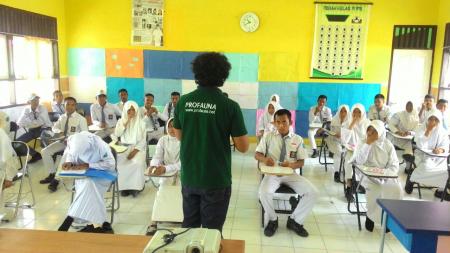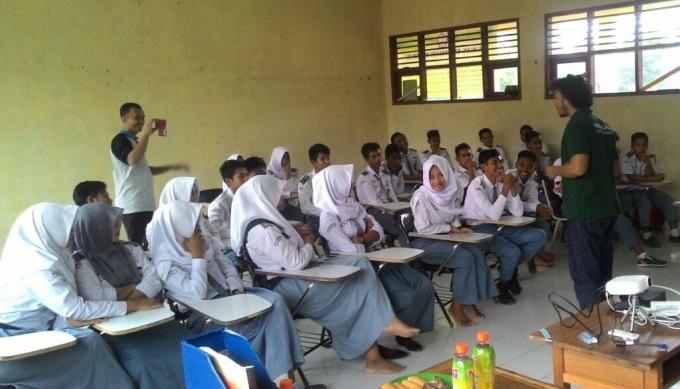Sea Turtle Conservation Education in the Coast of Berau
PROFAUNA Borneo and Berau Marine Affairs and Fisheries Service have been busy visiting schools in the coast of Berau to educate students about sea turtle conservation. The programs carried out during October 2016 also involved a local NGO called BLB and Turtle Foundation.
The education programs are parts of Berau Marine Affairs and Fisheries Service's "Malaga Batukar" program; in local language, 'Malaga' means engaging, while 'Batukar' is a short for 'batu karang' means coral reef. Therefore, 'Malaga Batukar' means engaging local people along the coast to conserve coral reefs for a better life.
In the 'Malaga Batukar' program, Berau Marine Affairs and Fisheries Service collaborate with PROFAUNA Borneo who has been actively promoting sea turtle protection in Berau. 'Malaga Batukar', however, is focused on monitoring and education.
Recently, the joint team visited SMAN (Senior High School) 8 Biduk-biduk on 17 October 2016, where they talked in front of 36 students. The program was then followed by another one at SMAN 10 Batuputih on 18 October 2016, which was attended by 27 students.
 During the sessions, PROFAUNA presented topics related to marine conservation, played conservation movies, and distributed "Ready to Go" booklets about sea turtle conservation. The students were enthusiastic during the visits because it was their first time receiving thorough explanation about these issues.
During the sessions, PROFAUNA presented topics related to marine conservation, played conservation movies, and distributed "Ready to Go" booklets about sea turtle conservation. The students were enthusiastic during the visits because it was their first time receiving thorough explanation about these issues.
The most interesting thing came up during the visits was that apparently 20 students from SMAN 8 Biduk-biduk and 14 students from SMAN 10 Batuputih had consumed sea turtle eggs, some even had it often.
"Looking at the questionnaire we gave them, we can see that sea turtle meat and eggs consumption in the coast of Berau is still high. We have a long way to go in educating the people and campaigning for this issue," said Bayu Sandi, the coordinator of PROFAUNA Borneo.

